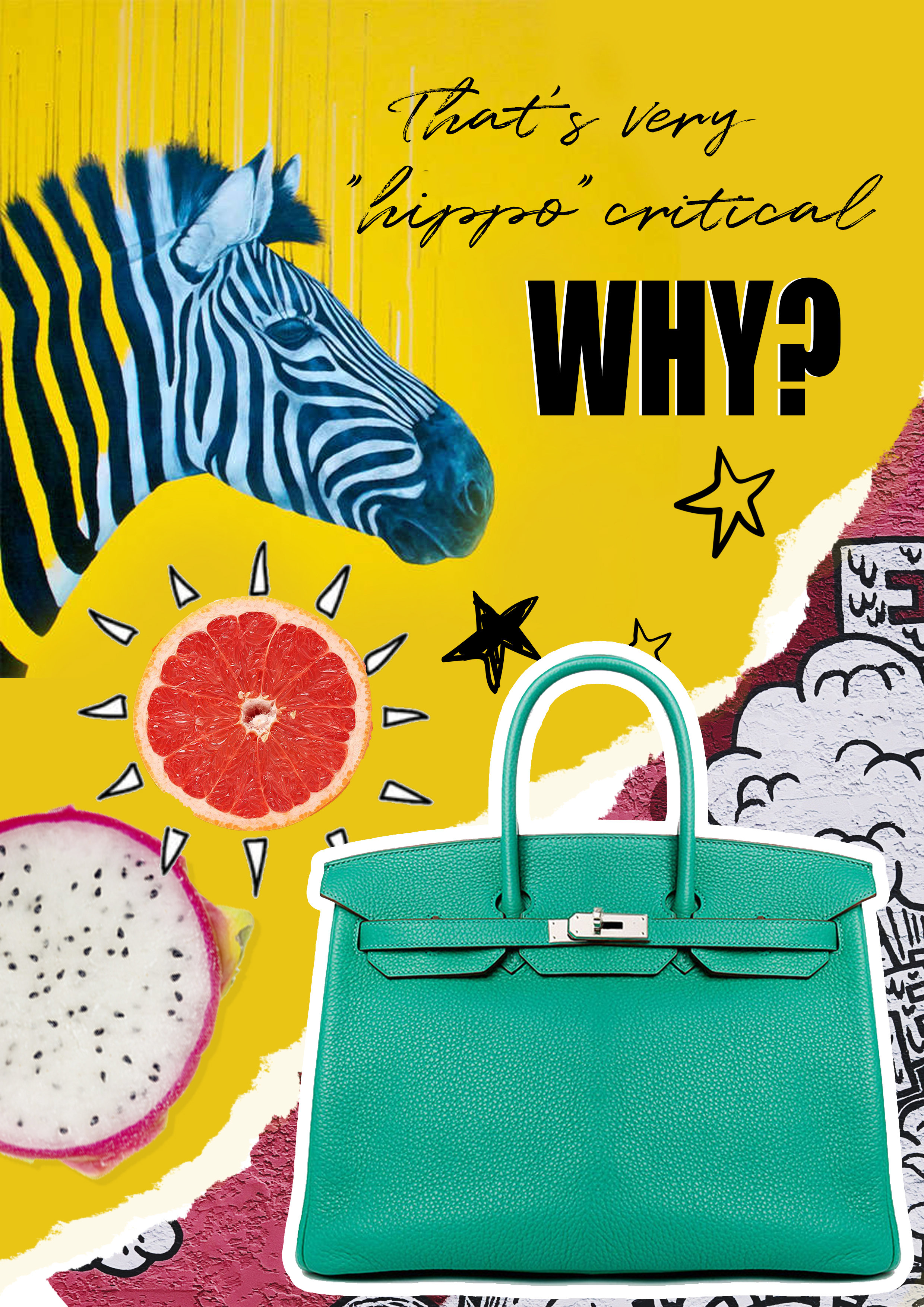If you had €300,000, what would you spend it on? Some might answer a house, a car, or a (many) luxurious holiday(s), but others may answer a Hermès Birkin handbag. The Birkin, named after actress and singer Jane Birkin, and its cousin, the Kelly, named after actress Grace Kelly, are among the most sought-after luxury goods in the world. Crocodile-clad versions of the Birkin bag start in the mid-€20,000 range, and can climb far north of that. The most expensive Birkin, a white Himalaya Birkin handmade from Niloticus crocodile and more than 240 diamonds on its 18-karat-gold hardware, was sold in 2017 for €350,000. No doubt the Birkin is a symbol of wealth and much-loved by celebrities, but the Birkin Croc has also attracted the wrath of animal-rights activists.
Back in 2015, PETA released a scathing exposé with undercover footage of the inhumane living conditions and brutal killing tactics used by an allegedly Hermès-owned tannery in Texas. The investigation also documented a Zimbabwe crocodile “prison” that exports skins for Hermès. In the same year, PETA purchased one single share of Hermès in order to put pressure on the luxury house with issues regarding the use of precious leathers in luxury accessories.
After being made aware of the purported cruel practices used against crocodiles in the production of Hermès bags, Jane Birkin demanded Hermès to stop using her name on the eponymous, iconic Birkin Croco until better practices were put in place.
Hermès takes pride its reputation – the company is one of the world’s last luxury brands to remain an independent label, strongly resisting conglomerates and “mass-market techniques” of selling. Birkin’s public takedown of Hermès over the Birkin Croco was undoubtedly an embarrassment for the fashion house.
As a response to the claims made by PETA, Hermès released a statement assuring that it did not partake in any mistreatment of animals. The house reiterated its determination and commitment to implement best practices in crocodile farming, as well as encourage the ethical treatment of crocodiles in its partner firms, in “strictest compliance with international regulations.” The fashion house said that there was an “isolated irregularity” in one of its crocodile farms in Texas, and pledged that any further misconduct will lead to the immediate cease of relations with this farm. After professional consultation, Hermès now demands that all suppliers in the USA comply with the Best Management Practices of Louisiana Alligator Farming document.
Hermès also stressed that the video content allegedly from a Zimbabwe crocodile farm was “recorded before any partnership between Hermès and the farm was established.” Furthermore, Hermès claims tha the footage was not captured at its partnered-farm. Audits at both the Texas farm and Zimbabwe farm in question concluded that farming and slaughter best practices were respected that both sites.
The parties have since resolved the name dispute, and Jane Birkin is said to have been satisfied with the measures taken by Hermès.
Hermès owns alligator farms and crocodile farms mainly in the United States, Africa, and Australia. These acquisitions were made after the boom in the leather accessories segment of the market, coupled with the global decline in meat consumption. On top of regular inspections over the last decade, Hermès has established a comprehensive and stringent audit programme in partnership with expert veterinarians that all partner firms must adopt. The programme encompasses the CITES, good farming practices, slaughtering procedures, environmental management, social and security conditions of employees and infrastructures.
In addition, Hermès stresses that the house has been “driven by a profound respect for nature since its establishment”, and underlines that “these farming practices have been contributed to saving the species by repopulating the reptiles in their natural habitat.”

No Comments